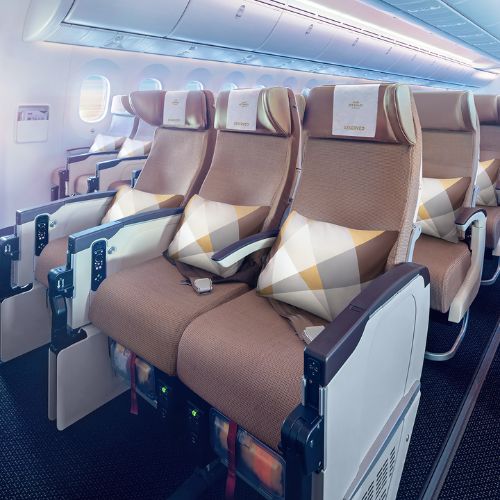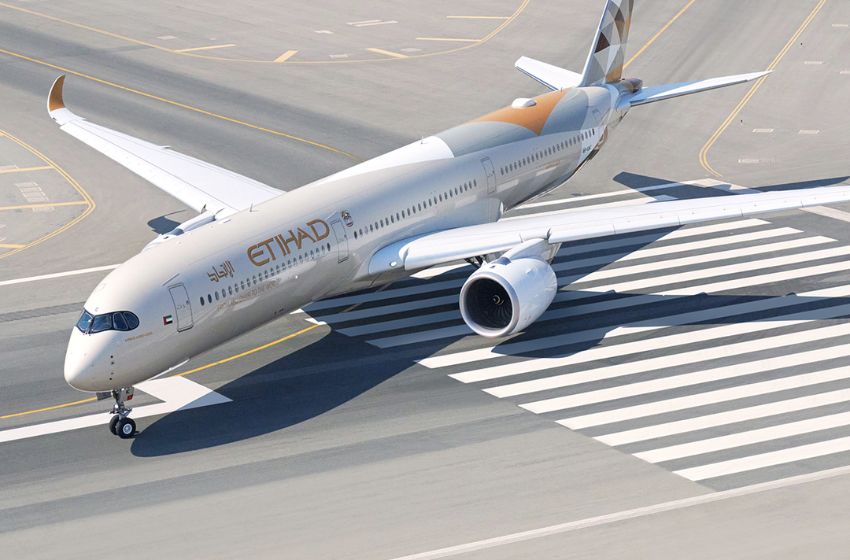Welcome aboard, aviation enthusiasts! Today, we embark on an exhilarating journey through the skies as we delve into the remarkable rise of Etihad Airways. From its humble beginnings to soaring heights, this blog post will unveil the captivating tale behind one of the world’s leading aviation powerhouses. Buckle up and prepare for a thrilling adventure that takes us from desert sands to expansive horizons, exploring how Etihad Airways has redefined luxury travel and become a symbol of excellence in the sky. So sit back, relax, and let’s soar high with Etihad Airways!

Introduction
In the dynamic world of aviation, few success stories are as remarkable as that of Etihad Airways. From its humble beginnings in the early 2000s, Etihad has soared to become a leading global airline, known for its commitment to excellence, innovation, and redefining the passenger experience. This blog takes you on a journey through the rise of Etihad Airways, exploring its origins, strategic milestones, unique offerings, and the impact it has had on the aviation industry.
Inception and Ambitious Vision: 2003-2006
Etihad Airways took its first steps in July 2003, with a bold vision to be the flag carrier of the United Arab Emirates (UAE) and compete on a global scale. Established by royal decree, the airline aimed to embody the spirit of the nation and contribute to the transformation of Abu Dhabi into a global aviation hub.
During its initial years, Etihad Airways focused on strategic partnerships, fleet expansion, and building a reputation for luxury and personalized service. The airline’s commitment to excellence was evident from the start, setting the stage for its rapid ascent in the aviation industry.
Strategic Expansion and Fleet Modernization: 2007-2012
The period from 2007 to 2012 marked a significant phase in Etihad Airways growth trajectory. The airline embarked on an ambitious expansion plan, introducing new routes and acquiring a modern fleet of state-of-the-art aircraft. Etihad’s commitment to providing passengers with a superior travel experience became increasingly apparent during this time.
In 2011, Etihad Airways made headlines with the largest aircraft order in commercial aviation history, signaling its intent to be a major player in the global aviation market. The airline strategically invested in fuel-efficient and innovative aircraft, setting the stage for enhanced operational efficiency and environmental sustainability.
Innovative Services and Passenger Experience: A Focus on Excellence
Etihad Airways differentiated itself by placing a strong emphasis on innovative services and redefining the passenger experience. The introduction of the Residence, a private three-room suite on board its flagship Airbus A380, exemplified the airline’s commitment to luxury and personalized service unparalleled in the industry.
Etihad Airways dedication to passenger comfort extended beyond the premium cabins. The introduction of the Economy Space, a seating option with additional legroom, and the Flying Nanny service for families with young children showcased the airline’s commitment to meeting diverse passenger needs.
Strategic Alliances and Equity Partnerships: Building Global Connectivity
Understanding the importance of a connected world, Etihad Airways strategically entered into alliances and equity partnerships to expand its global reach. The airline invested in minority stakes in several international carriers, creating a network that extended its footprint and enhanced connectivity.
Partnerships with airlines such as Virgin Australia, Air Serbia, and Jet Airways strengthened Etihad Airways presence in key markets and facilitated seamless travel experiences for passengers. These alliances played a crucial role in the airline’s strategy of offering an extensive network through codeshare agreements and shared resources.
Navigating Challenges and Future Outlook: 2014 Onward
The aviation industry faced significant challenges in the mid-2010s, including fluctuating fuel prices and economic uncertainties. Etihad Airways, like many other carriers, had to navigate these challenges and adapt to evolving market conditions. The airline implemented strategic initiatives, including cost-cutting measures and fleet adjustments, to ensure its resilience in a competitive environment.
Looking to the future, Etihad Airways remains focused on sustainable growth and enhancing its offerings. The airline continues to invest in digital innovation, sustainability initiatives, and improving operational efficiency. As the aviation industry undergoes transformations, Etihad is poised to play a pivotal role in shaping the future of air travel.

Conclusion
Etihad Airways journey from a fledgling airline in 2003 to a leading aviation powerhouse today is a testament to its visionary leadership, strategic acumen, and unwavering commitment to passenger satisfaction. The airline’s story is one of resilience, innovation, and a relentless pursuit of excellence in an industry known for its challenges.
As Etihad continues to redefine air travel with a focus on luxury, innovation, and global connectivity, its impact on the aviation landscape remains significant. The rise of Etihad Airways serves as an inspiration for the industry, demonstrating that a commitment to quality, strategic partnerships, and passenger-centric services can propel an airline to unprecedented heights. Etihad’s journey is not just a story of an airline; it’s a narrative of ambition, perseverance, and a vision that took flight to become a global aviation success story.



